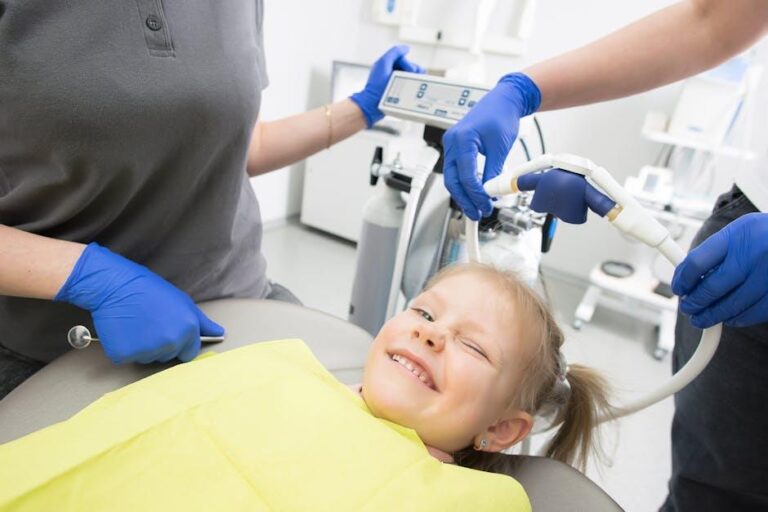
1 in 3 Kids Has Dental Problems, Poll Finds – U.S. News & World Report
Recent research findings spotlight a concerning oral health crisis among children in the United States. According to a recent poll, one in three children is affected by dental problems. This alarming statistic sheds light on the importance of pediatric dental care, early prevention, and education to ensure kids grow up with healthy smiles. In this article, we dive deep into the findings, causes, and practical tips to combat dental issues among children.
Overview of the Poll and Key Findings
The poll, conducted nationally among parents and caregivers, reveals that 33% of U.S. children have experienced dental problems. These issues range from cavities and tooth decay to gum diseases and other oral health complications. Experts point to several factors contributing to this trend, including diet, limited access to dental care, and a lack of routine preventive measures.
| Age Group | Percentage with Dental Problems | Common Issues |
|---|---|---|
| Under 5 years | 25% | Early childhood caries |
| 6 to 12 years | 35% | Cavities, enamel erosion |
| 13 to 18 years | 38% | Gum disease, orthodontic issues |
Common Dental Problems Affecting Kids
Understanding the types of dental problems children face is critical for parents and caregivers. Here are the most frequently reported issues:
- Cavities (Tooth Decay): The most common chronic disease in children, caused by poor oral hygiene and sugar consumption.
- Gum Disease (Gingivitis): Inflammation of the gums, often due to plaque buildup.
- Tooth Sensitivity and Enamel Erosion: Often from acidic drinks or excessive brushing.
- Dental Trauma: Physical injuries from accidents or sports.
- Orthodontic Issues: Misaligned teeth or bite problems needing early intervention.
Why Are So Many Kids Facing Dental Problems?
Several underlying reasons contribute to this widespread trend, some of which include:
- Poor Dietary Habits: High sugar intake from sodas, candies, and processed foods fuels cavity formation.
- Lack of Regular Dental Care: Many children do not visit the dentist regularly due to cost, access, or dental anxiety.
- Inadequate Oral Hygiene: Improper brushing and flossing habits start early and persist.
- Socioeconomic Disparities: Kids from low-income families are disproportionately affected by dental problems.
Benefits of Proper Pediatric Dental Care
Ensuring your child has good oral health habits yields numerous benefits beyond a beautiful smile:
- Prevents Pain and Discomfort: Early care avoids painful cavities and infections.
- Supports Overall Health: Poor oral health is linked to systemic conditions like diabetes and heart disease.
- Boosts Self-Esteem: Healthy teeth create confidence in social situations.
- Avoids Costly Treatments: Preventive care is significantly cheaper than restorative interventions.
Practical Tips to Prevent Dental Problems in Kids
Parents and caregivers play an integral role in their child’s oral health. Here are practical, easy-to-follow tips that can make a big difference:
- Start dental hygiene early with daily brushing twice a day using fluoride toothpaste.
- Floss your child’s teeth once they have two teeth that touch.
- Limit sugary snacks and drinks; encourage water and healthy foods instead.
- Schedule regular dental check-ups starting by the child’s first birthday.
- Encourage wearing mouthguards during sports to prevent dental trauma.
- Model good dental habits yourself to reinforce consistency.
Additional Home Care Routines
- Use fluoride rinses as recommended by your dentist.
- Maintain a dental emergency kit (gauze, cold packs) for accidents.
- Use fun dental apps or charts to encourage kids to brush properly.
Case Study: Improving Oral Health in Community Schools
A nationwide initiative conducted in several U.S. community schools provides a blueprint for tackling pediatric dental issues. The program included free dental screenings, educational workshops on oral hygiene, and distribution of free toothbrush kits. After one year:
- Dental cavity rates decreased by 15% among participating students.
- Regular dental visits increased by 20%.
- 70% of students reported better brushing habits.
This case study demonstrates that targeted education and access to care can significantly reduce dental problems in children.
Recognizing Signs of Dental Problems Early
Parents should be vigilant about warning signs, such as:
- Persistent tooth pain or sensitivity
- Visible holes or pits in the teeth
- Swollen or bleeding gums
- Bad breath that doesn’t improve with brushing
- Reluctance to eat or chew
Early recognition leads to timely dental intervention and better health outcomes.
Conclusion: Taking Action to Protect Kids’ Dental Health
The startling statistic that 1 in 3 kids has dental problems serves as an important wake-up call for parents, schools, and communities across the U.S. Dental health is foundational to overall wellness and quality of life. By understanding common dental issues, advocating for better access to care, and consistently practicing preventive oral hygiene, we can dramatically improve children’s dental outcomes nationwide.
Remember — a healthy smile today means a lifetime of confident, pain-free grins tomorrow.


